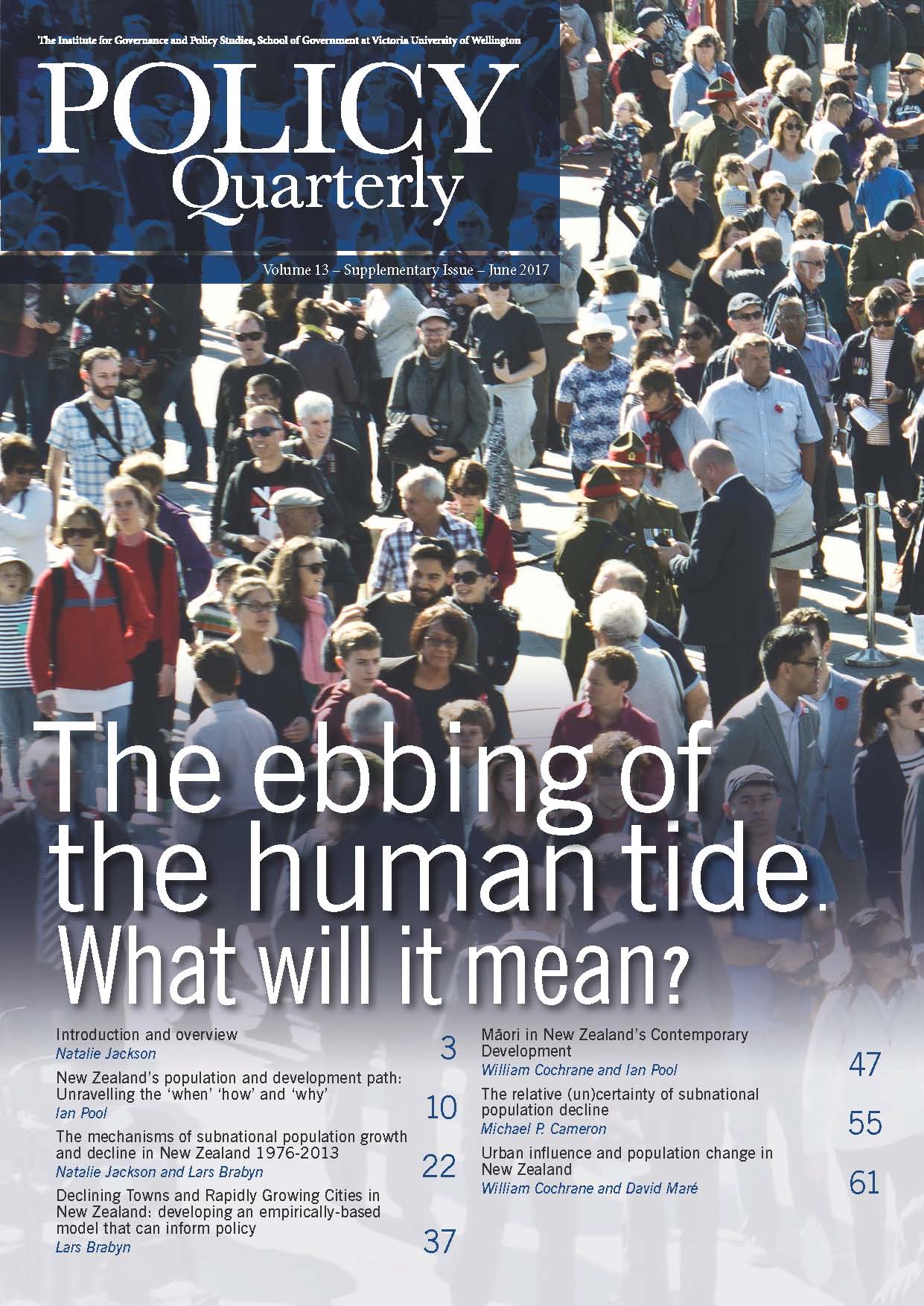Declining towns and rapidly growing cities in New Zealand: developing an empirically-based model that can inform policy
DOI:
https://doi.org/10.26686/pq.v13i0.4566Keywords:
patterns in population change, social and infrastructure problems, net migration, statistical modellingAbstract
Understanding and predicting spatial patterns in population change has significant implications for infrastructure, property investments, and national spatial planning. It is also at the core of understanding what motivates people to move to different places, and the underlying geographical conditions that are important to people. During recent times, the population growth of large cities in New Zealand (particularly Auckland, but Tauranga has had faster growth) has resulted in severe social and infrastructural problems, such as sky-rocketing house prices, homelessness, and congestion of roads. At the same time, many small towns have had significant population decline, with no proposed solutions apart from acceptance or undertaking so-called “managed decline” (McMillan 2016; Wood 2017). As will be described in this article, net migration has been a significant component of the spatial variation in population change, while natural change does not have a significant spatial variation and has been generally positive for all urban places.
Downloads
Downloads
Published
Issue
Section
License
Permission: In the interest of promoting debate and wider dissemination, the IGPS encourages use of all or part of the articles appearing in PQ, where there is no element of commercial gain. Appropriate acknowledgement of both author and source should be made in all cases. Please direct requests for permission to reprint articles from this publication to Policy-Quarterly@vuw.ac.nz.



